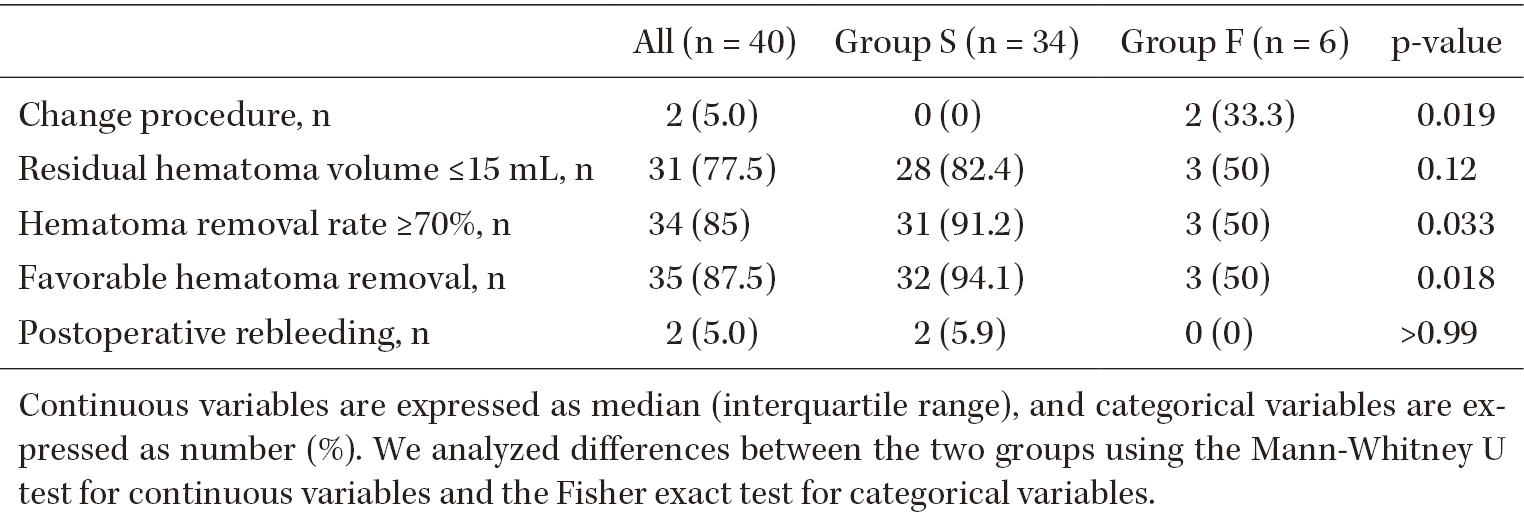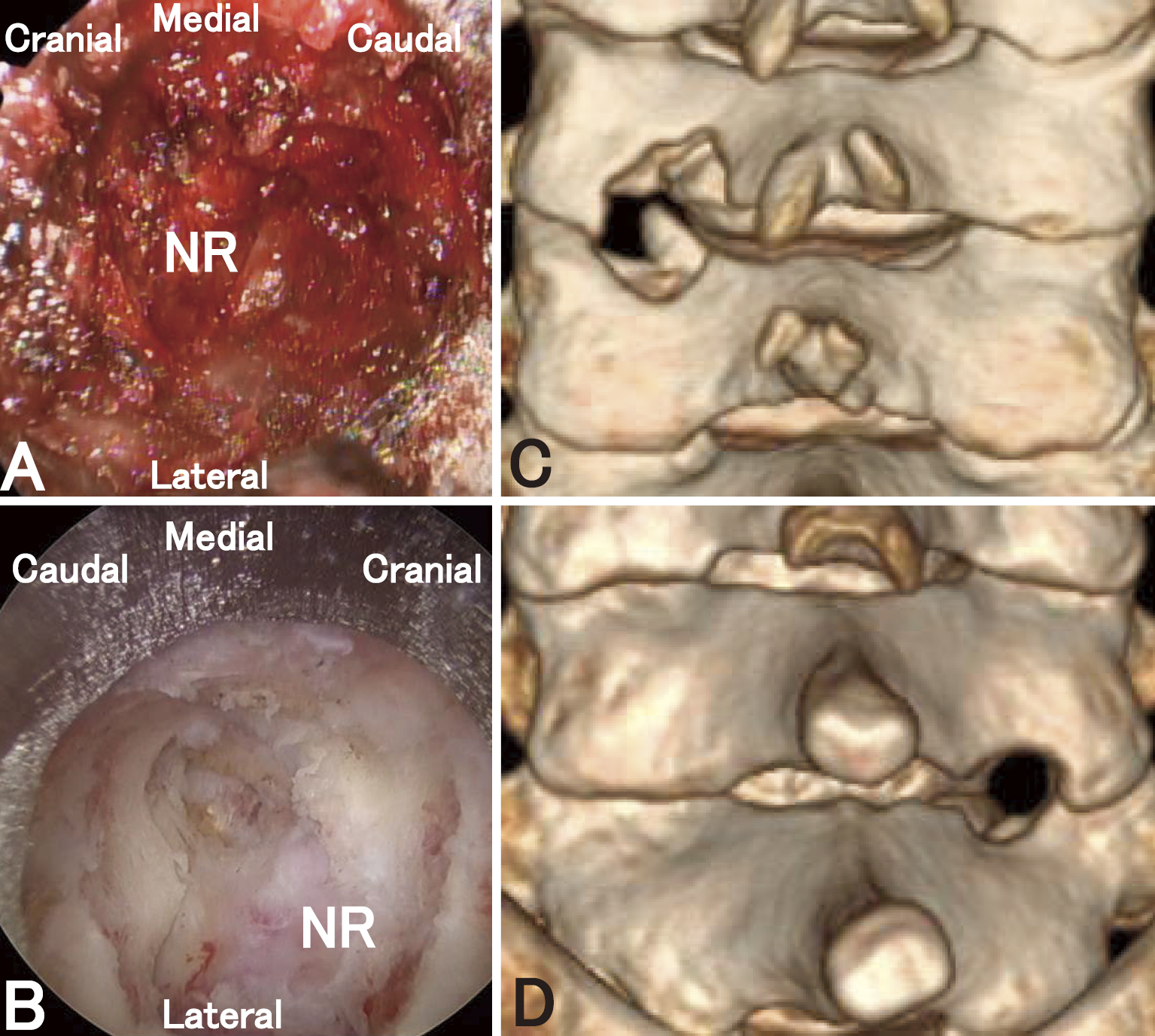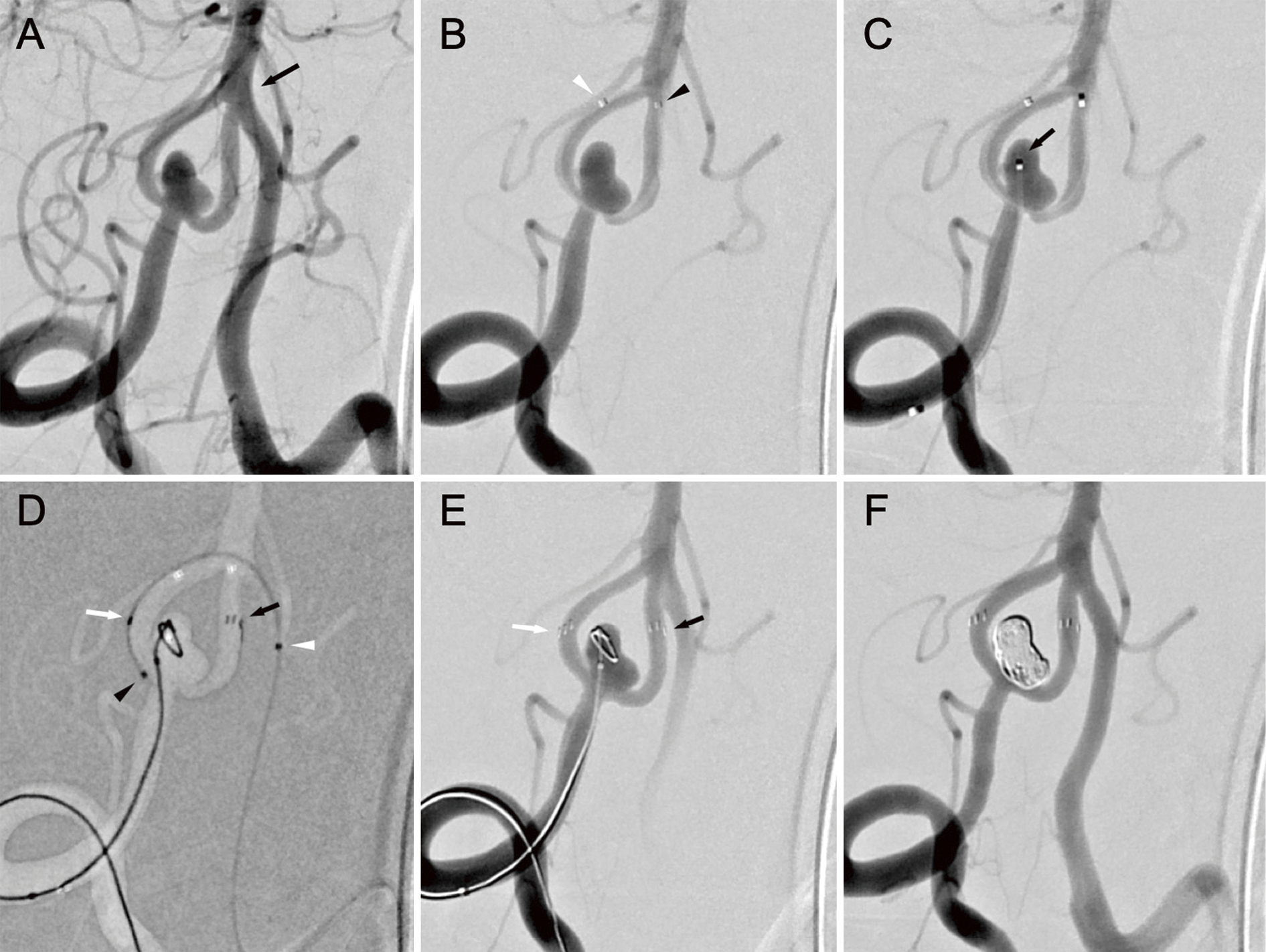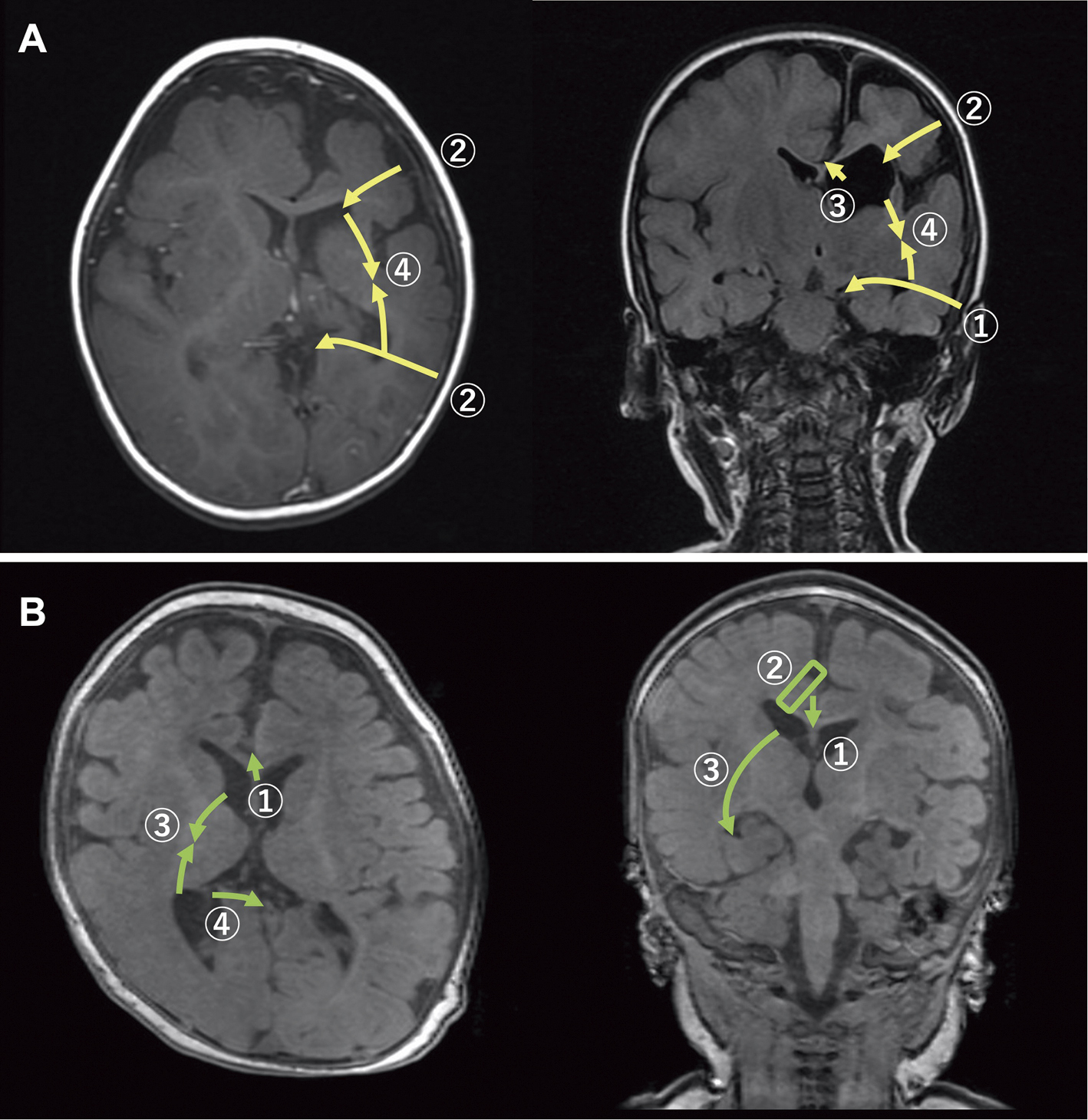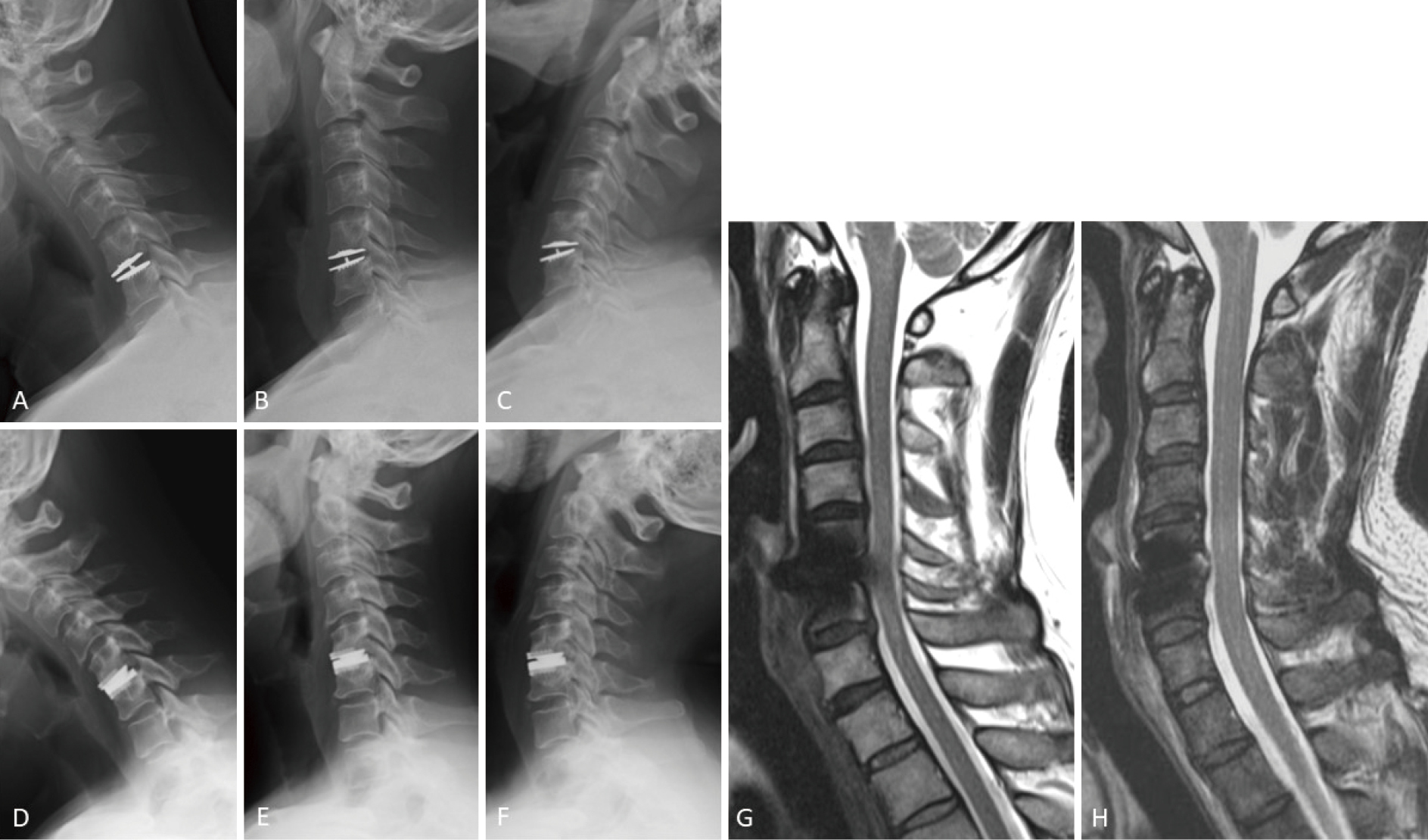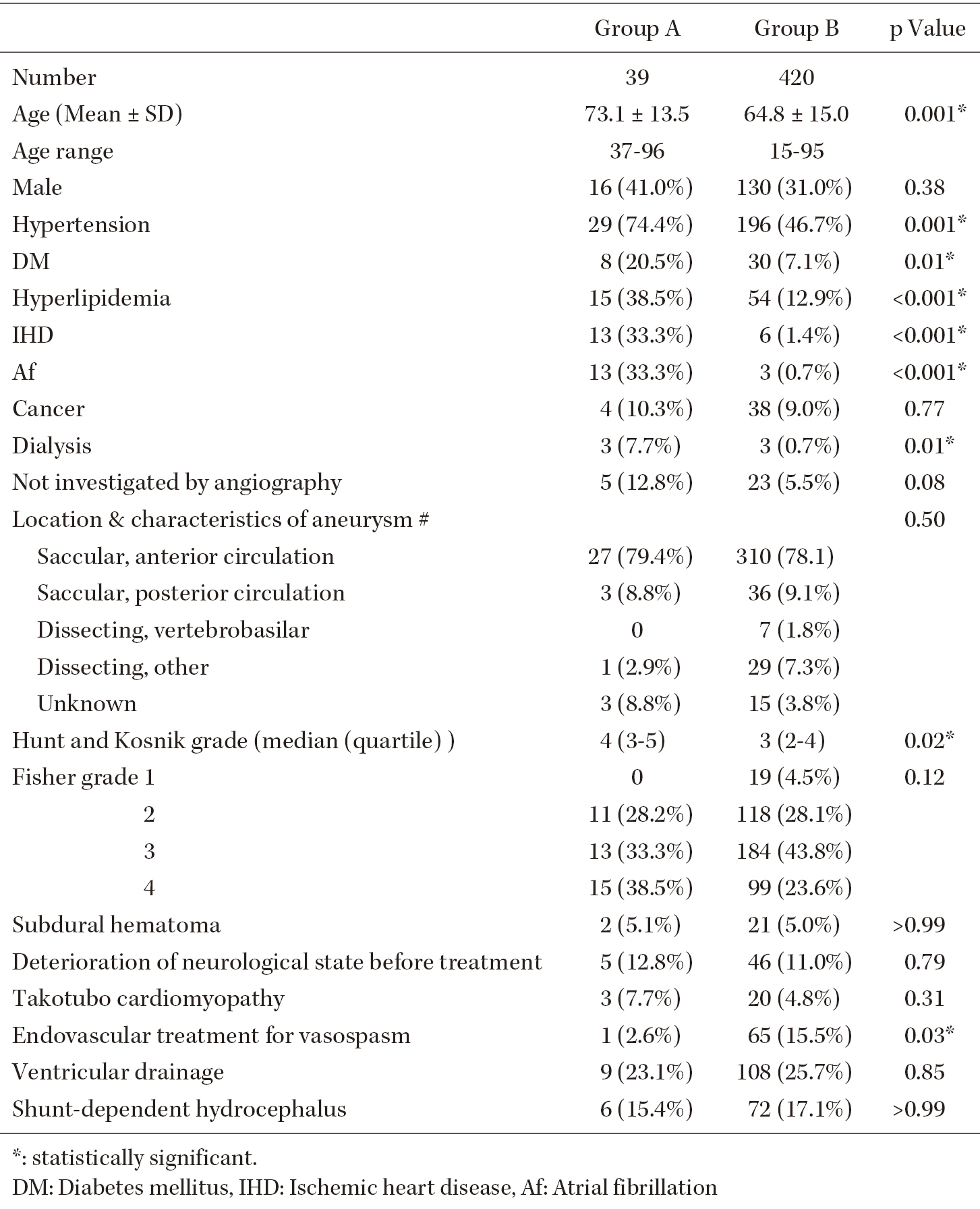3 0 0 0 OA Safety of Gliadel Implant for Malignant Glioma: Report of Postmarketing Surveillance in Japan
- 著者
- Ryo NISHIKAWA Hisayuki IWATA Yukinori SAKATA Kenzo MURAMOTO Toshiyuki MATSUOKA
- 出版者
- The Japan Neurosurgical Society
- 雑誌
- Neurologia medico-chirurgica (ISSN:04708105)
- 巻号頁・発行日
- vol.61, no.9, pp.536-548, 2021 (Released:2021-09-15)
- 参考文献数
- 16
- 被引用文献数
- 9
Clinical trial data of Carmustine implant (Gliadel Wafer) in Japanese patients with malignant glioma are limited; thus, we conducted a postmarketing surveillance study to evaluate the safety of Gliadel in real-world clinical practice in Japan. In this postmarketing surveillance study, all patients who received Gliadel placement for malignant glioma surgeries from its market launch (January 9, 2013) to July 10, 2013 were enrolled from 229 institutions using a central registration system. Up to eight wafers of Gliadel (containing 61.6 mg of carmustine) were used to cover the site of brain tumor resection intraoperatively according to the size and shape of the tumor resection cavity. The observation period lasted 3 months after Gliadel placement. Patients were followed up for 1 year postoperatively. Safety was assessed by the incidence of adverse events (AEs) and adverse drug reactions (ADRs). In total, 558 patients were included. Most patients (66.7%) received eight Gliadel wafers. The percentage of patients with ADRs was 35.7% (365 ADR episodes in 199 patients). Of the AEs of special interest, the most common were cerebral edema (22.2%, 124/558 patients), convulsion (9.9%, 55/558 patients), impaired healing (4.8%, 27/558 patients), and infection (3.4%, 19/558 patients). This first all-case postmarketing surveillance report of the safety of Gliadel in real-world clinical practice in Japan suggests that the risk of toxicity with Gliadel placement is relatively tolerable. The survival benefits of Gliadel placement should be evaluated and considered carefully by the clinician taking into account possible toxicities.
- 著者
- Hiroyuki TAKAO Dai WATANABE Satoshi TANI Hiroki OHASHI Tosihiro ISHIBASHI Kohei TAKESHITA Shigeyuki MURAKAMI Tetsuya NISHIMOTO Kohei YUGE Kostadin KARAGIOZOV Toshiaki ABE Yuichi MURAYAMA
- 出版者
- The Japan Neurosurgical Society
- 雑誌
- Neurologia medico-chirurgica (ISSN:04708105)
- 巻号頁・発行日
- pp.oa.2021-0149, (Released:2021-10-14)
- 参考文献数
- 18
- 被引用文献数
- 1
A simulation model was developed to better understand the mechanisms of brain injuries in sports. A three-dimensional model comprising approximately 1.22 million elements was constructed from cranial computed tomography images of adult male volunteers by the voxel method. To simulate contact sports that permit actions such as tackling, a sinusoidal wave with duration of 10 ms and maximum acceleration of 2000 m/s2 was applied to the lowest point of the model to apply rotational acceleration to the head from different directions. The von Mises stress was then observed at five points in the coronal plane of the brain: cingulate gyrus (CG), corpus callosum (CC), brain stem (BS), lateral temporal lobe (LT), and medial temporal lobe (MT). LS-DYNA universal finite element analysis software with explicit time integration was used for the analysis. Concentrations of stress started to appear in the CC and BS at 10 ms post-impact, after which they also became evident in the CG and MT. The maximum changes in stress at each location occurred 10–15 ms post-impact. The von Mises stress was 9–14 kPa in the CG, 8–24 kPa in the CC, 12–24 kPa in the BS, 7–12 kPa in the LT, and 12–18 kPa in the MT. The highest stress in every part of the brain occurred after lateral impact, followed by oblique impact and sagittal impact. Such simulations may help elucidate the mechanisms of brain injuries in sports and help develop measures to prevent chronic traumatic encephalopathy.
3 0 0 0 OA MEG–BMI to Control Phantom Limb Pain
- 著者
- Takufumi YANAGISAWA Ryohei FUKUMA Ben SEYMOUR Koichi HOSOMI Haruhiko KISHIMA Takeshi SHIMIZU Hiroshi YOKOI Masayuki HIRATA Toshiki YOSHIMINE Yukiyasu KAMITANI Youichi SAITOH
- 出版者
- The Japan Neurosurgical Society
- 雑誌
- Neurologia medico-chirurgica (ISSN:04708105)
- 巻号頁・発行日
- pp.st.2018-0099, (Released:2018-07-12)
- 参考文献数
- 41
- 被引用文献数
- 6
A brachial plexus root avulsion (BPRA) causes intractable pain in the insensible affected hands. Such pain is partly due to phantom limb pain, which is neuropathic pain occurring after the amputation of a limb and partial or complete deafferentation. Previous studies suggested that the pain was attributable to maladaptive plasticity of the sensorimotor cortex. However, there is little evidence to demonstrate the causal links between the pain and the cortical representation, and how much cortical factors affect the pain. Here, we applied lesioning of the dorsal root entry zone (DREZotomy) and training with a brain–machine interface (BMI) based on real-time magnetoencephalography signals to reconstruct affected hand movements with a robotic hand. The DREZotomy successfully reduced the shooting pain after BPRA, but a part of the pain remained. The BMI training successfully induced some plastic changes in the sensorimotor representation of the phantom hand movements and helped control the remaining pain. When the patient tried to control the robotic hand by moving their phantom hand through association with the representation of the intact hand, this especially decreased the pain while decreasing the classification accuracy of the phantom hand movements. These results strongly suggested that pain after the BPRA was partly attributable to cortical representation of phantom hand movements and that the BMI training controlled the pain by inducing appropriate cortical reorganization. For the treatment of chronic pain, we need to know how to modulate the cortical representation by novel methods.
3 0 0 0 OA Symptomatic Gas-Containing Herniated Disc With the Vacuum Phenomenon: Mechanism and Treatment
- 著者
- Chang-Hyun LEE Jae Hoon CHO Seung-Jae HYUN Sang Hoon YOON Ki-Jeong KIM Hyun-Jib KIM
- 出版者
- 社団法人 日本脳神経外科学会
- 雑誌
- Neurologia medico-chirurgica (ISSN:04708105)
- 巻号頁・発行日
- vol.52, no.2, pp.106-108, 2012 (Released:2012-02-24)
- 参考文献数
- 12
- 被引用文献数
- 2 13
A 76-year-old woman presented with an extremely rare case of symptomatic gas-containing disc herniation manifesting as left posterolateral thigh pain and ankle dorsiflexion motor weakness. The diagnosis was L3-4 vacuum disc associated with epidural pneumorrhachis. The patient underwent partial hemilaminectomy and cyst incision. After incising the cyst, the thecal sac and root were decompressed sufficiently. Vacuum disc is a common phenomenon in the elderly rarely associated with pneumorrhachis and is usually asymptomatic. Symptomatic epidural gas-containing herniated discs with the vacuum phenomenon are very rare. Gas aspiration should be considered, but excision of the gas-containing herniated disc should be performed in patients with neurological deficits, frequent recurrence, or difficult location to approach.
- 著者
- Thiparpa THAMAMONGOOD Shoko HARA Hiroyuki AKAGAWA Motoki INAJI Yoji TANAKA Tadashi NARIAI Taketoshi MAEHARA
- 出版者
- The Japan Neurosurgical Society
- 雑誌
- Neurologia medico-chirurgica (ISSN:04708105)
- 巻号頁・発行日
- pp.2023-0169, (Released:2023-12-06)
- 参考文献数
- 25
Recently, thyroid autoantibodies were found to be associated with moyamoya disease (MMD). The ring finger protein 213 (RNF213) p.R4810K variant represents the most important susceptibility genotype of this disease, but its relationship with thyroid autoantibodies remains to be elucidated. Thus, in this study, we aimed to evaluate the clinical relevance of thyroid autoantibodies in each RNF213 genotype in patients with MMD. Included in this study were patients with MMD without a thyroid disease history and in euthyroid status; they were then classified into the mutated or nonmutated based on the RNF213 p.R4810K genotype and positive or negative based on thyroid autoantibody (thyroperoxidase and thyroglobulin) levels. Clinical data of each group were thereafter evaluated. Among the 209 patients, the mutated RNF213 p.R4810K variant and positive thyroid autoantibodies were detected in 155 and 41 patients, respectively. Positive thyroid autoantibodies were found to be more common in the nonmutated patients than in the mutated patients (31.5% vs. 15.5%; P = 0.011). In the mutated patients, as compared to autoantibody-negative patients, autoantibody-positive patients were determined to be more likely to have advanced disease with posterior cerebral artery involvement (54.2% vs. 29.0%; P = 0.017), white matter infarction (58.3% vs. 37.6%; P = 0.046), and a higher modified Rankin Scale at last visit (16.7% vs. 3.1%; P = 0.021). These results suggest that thyroid autoantibodies can act as an immunity inducer in patients with MMD lacking the susceptibility gene RNF213 p.R4810K variant. Moreover, the simultaneous presence of thyroid autoantibodies and the variant seems to aggravate the disease, which indicates synergy between thyroid autoantibodies and the variant.
- 著者
- Kengo KISHIDA Daisuke MARUYAMA Saki KOTANI Nobukuni MURAKAMI Naoya HASHIMOTO
- 出版者
- The Japan Neurosurgical Society
- 雑誌
- Neurologia medico-chirurgica (ISSN:04708105)
- 巻号頁・発行日
- pp.2023-0043, (Released:2023-11-08)
- 参考文献数
- 41
Studies regarding hematoma stiffness and removal difficulty are scarce. This study explored the association between hematoma stiffness and surgical results of endoscopic hematoma removal for intracerebral hemorrhage. It also aimed to clarify factors associated with hematoma stiffness. We classified intracerebral hematoma as either soft or firm stiffness by retrospectively evaluating operative videos by two neurosurgeons. The interobserver reliability of the classification was assessed by calculating the κ values. We investigated the relationship between hematoma stiffness and surgical results. Favorable hematoma removal (FHR) was defined as a residual hematoma volume of ≤15 mL or removal rate of ≥70%. Furthermore, we compared the background characteristics, imaging findings, and laboratory data between the two groups. Forty patients were included in this study. The mean baseline hematoma volume was 69.9 mL (range, 41.3-97.6 mL). FHR was accomplished in 35 cases (87.5%). Thirty-four patients (85%) were in the soft hematoma group (group S). Six patients (15%) were in the firm hematoma group (group F). Classification of hematoma stiffness demonstrated an excellent degree of interobserver agreement (κ score = 0.91). Patients in group S had a high FHR rate (p = 0.018) and short endoscopic procedure times (p = 0.00034). The island sign was present in group S (p = 0.030). Patients in group F had significantly high fibrinogen levels (p = 0.049) and low serum total calcium (p = 0.032), hemoglobin (p = 0.041), and hematocrit (p = 0.011) levels. Hematoma stiffness during endoscopic surgery for intracerebral hemorrhage correlates with surgical results, including the endoscopic procedure time and accomplishing rate of FHR.
- 著者
- Yoshiro ITO Hisayuki HOSOO Masayuki SATO Aiki MARUSHIMA Mikito HAYAKAWA Yuji MATSUMARU Eiichi ISHIKAWA
- 出版者
- The Japan Neurosurgical Society
- 雑誌
- Neurologia medico-chirurgica (ISSN:04708105)
- 巻号頁・発行日
- pp.2022-0361, (Released:2023-09-23)
- 参考文献数
- 25
In the transsylvian (TS) approach, as characterized by clipping surgery, the presurgical visualization of the superficial middle cerebral vein (SMCV) can help change the surgical approach to ensure safe microsurgery. Nevertheless, identifying preoperatively the venous structures that are involved in this approach is difficult. In this study, we investigated the venous structures that are involved in the TS approach using three-dimensional (3D) rotational venography (3D-RV) and evaluated the effectiveness of this method for presurgical simulation. Patients who underwent 3D-RV between August 2018 and June 2020 were involved in this retrospective study. The 3D-RV and partial maximum intensity projection images with a thickness of 5 mm were computationally reconstructed. The venous structures were subdivided into the following three portions according to the anatomic location: superficial, intermediate, and basal portions. In the superficial portion, predominant frontosylvian veins were observed on 31 (41%) sides, predominant temporosylvian veins on seven (9%) sides, and equivalent fronto- and temporosylvian veins on 28 (37%) sides. The veins in the intermediate (deep middle cerebral and uncal veins) and basal portions (frontobasal bridging veins) emptied into the SMCV on 57 (75%) and 34 (45%) sides, respectively. The 3D-RV images were highly representative of the venous structures observed during microsurgery. In this study, 3D-RV was utilized to capture the details of the venous structures from the superficial to the deep portions. Presurgical simulation of the venous structures that are involved in the TS approach using 3D-RV may increase the safety of microsurgical approaches.
- 著者
- Blumstein GIDEON Kento TAKEBAYASHI Takahiro INUI Yasushi OSHIMA Hiroki IWAI Hirohiko INANAMI Hisashi KOGA
- 出版者
- The Japan Neurosurgical Society
- 雑誌
- Neurologia medico-chirurgica (ISSN:04708105)
- 巻号頁・発行日
- pp.2023-0073, (Released:2023-07-10)
- 参考文献数
- 21
- 被引用文献数
- 1
This study aimed to compare the outcomes of microendoscopic cervical foraminotomy (MECF) versus full-endoscopic cervical foraminotomy (FECF) for treating cervical radiculopathy (CR).A retrospective study was performed on patients with CR treated using MECF (n = 35) or FECF (n = 89). A 16-mm tubular retractor and endoscope was used for MECF, while a 4.1-mm working channel endoscope was used for FECF. Patient background and operative data were collected. The numerical rating scale (NRS) and the Neck Disability Index scores were recorded preoperatively and at 1 year postoperatively. Postoperative subjective satisfaction was also assessed.Although the NRS, and NDI scores, as well as postoperative satisfaction at 1 year considerably improved in both groups, one of the background data (number of operated vertebral level) was significantly different. Therefore, we separately analyzed single- and two-level CR. In single-level CR, operation time, intraoperative bleeding, postoperative stay, NDI after 1 year, and reoperation rate were statistically superior in FECF group. In two-level CR, the postoperative stay was statistically superior in FECF group. Three postoperative hematomas were observed in the MECF group, while none was observed in the FECF group.Operative outcomes did not significantly differ between groups. We did not observe postoperative hematoma in FECF even without placement of a postoperative drain. Therefore, we recommend FECF as the first option for the treatment of CR as it has a better safety profile and is minimally invasive.
- 著者
- Shizuo HATASHITA Nobunori KOGA Yasuaki HOSAKA Suguru TAKAGI
- 出版者
- The Japan Neurosurgical Society
- 雑誌
- Neurologia medico-chirurgica (ISSN:04708105)
- 巻号頁・発行日
- vol.33, no.1, pp.13-18, 1993 (Released:2006-05-26)
- 参考文献数
- 20
- 被引用文献数
- 68 75
Sixty patients with acute subdural hematoma were treated at Tokyo Metropolitan Hiroo Hospital between 1981 and 1989. The overall mortality was 55% and the functional recovery rate 30%. Thirteen (93%) of 14 patients with a Glasgow Coma Scale (GCS) score of 3 died, while all eight patients with a GCS score of 7 or more achieved functional recovery. The mortality of patients with GCS scores of 4-6 ranged from 45 to 67%. Patients with GCS scores of 4-6 over 65 years old had a mortality of 82%, compared to 50% mortality for those aged 19-40 years. The mortality for patients with GCS scores of 4-6 operated on within 4 hours of injury was 62% in contrast to 33% for those operated on from 4 to 10 hours. Patients with GCS scores of 4-6 who underwent craniotomy with evacuation of the hematoma achieved significantly better recovery than those treated by burr holes. Four patients with GCS scores of 4-6 died in spite of decompressive craniectomy or craniotomy with duroplasty. The mortality is only influenced by age and type of surgical intervention among patients with GCS scores of 4-6. Shorter time from injury to surgical evacuation does not affect mortality within 10 hours of injury.
- 著者
- Satoru OSHINO Naoki TANI Hui Ming KHOO Kuriko KAGITANI-SHIMONO Shin NABATAME Koji TOMINAGA Takufumi YANAGISAWA Masayuki HIRATA Haruhiko KISHIMA
- 出版者
- The Japan Neurosurgical Society
- 雑誌
- Neurologia medico-chirurgica (ISSN:04708105)
- 巻号頁・発行日
- pp.2022-0300, (Released:2023-04-06)
- 参考文献数
- 11
- 被引用文献数
- 2
Successful surgery for drug-resistant pediatric epilepsy can facilitate motor and cognitive development and improve quality of life by resolution or reduction of epileptic seizures. Therefore, surgery should be considered early in the disease course. However, in some cases, the estimated surgical outcomes are not achieved, and additional surgical treatments are considered. In this study, we investigated the clinical factors related with such unsatisfactory outcomes.We reviewed the clinical data of 92 patients who underwent 112 surgical procedures (69 resection and 53 palliation procedures). Surgical outcomes were assessed according to the postoperative disease status, which was classified as good, controlled, and poor. The following clinical factors were analyzed in relation to surgical outcome: sex, age at onset, etiology (malformation of cortical development, tumor, temporal lobe epilepsy, scar, inflammation, and non-lesional epilepsy), presence of genetic cause, and history of developmental epileptic encephalopathy. At a median of 59 (30-81.25) months after the initial surgery, the disease status was good in 38 (41%), controlled in 39 (42%), and poor in 15 (16%) patients. Among the evaluated factors, etiology exhibited the strongest correlation with surgical outcomes. Tumor-induced and temporal lobe epilepsy were correlated with good, whereas malformation of cortical development, early seizure onset, and presence of genetic cause were correlated with poor disease status. Although epilepsy surgery for the patients who present with the latter factors is challenging, these patients demonstrate a greater need for surgical treatment. Hence, development of more effective surgical options is warranted, including palliative procedures.
- 著者
- Haruka MIYATA Futa NINOMIYA Tomoaki FUJITA Yutaka NONOYAMA Takuya NAKAZAWA Shigeharu FUKAO
- 出版者
- The Japan Neurosurgical Society
- 雑誌
- Neurologia medico-chirurgica (ISSN:04708105)
- 巻号頁・発行日
- pp.2022-0309, (Released:2023-03-31)
- 参考文献数
- 23
Horizontal stenting protects the aneurysm neck with stent deployment across the aneurysm neck via the circle of Willis. A saccular aneurysm associated with intracranial arterial fenestration is very rare. Herein, we describe the first case of an unruptured aneurysm related to intracranial arterial fenestration treated with horizontal stenting. A 23-year-old woman presented with a 7-mm broad-necked aneurysm at the fenestration of the right intracranial vertebral artery (VA), which was incidentally found on magnetic resonance imaging. The patient underwent endovascular treatment with horizontal stenting via the vertebrobasilar junction from the contralateral left VA, followed by coil embolization using a jailed microcatheter from the ipsilateral right VA. The procedure was finished with sufficient embolization, and no complications occurred. Horizontal stent delivery via the vertebrobasilar junction for coil embolization of a broad-necked aneurysm arising from the fenestration of the VA is a safe and effective therapeutic strategy.
2 0 0 0 OA A Consideration of Optimal Head Position in Transsylvian Selective Amygdalohippocampectomy
- 著者
- Tadashi HAMASAKI Hiroki UCHIKAWA Tatsuya KAWANO Keitaro KAI Tastuya TAKEZAKI Akitake MUKASA
- 出版者
- The Japan Neurosurgical Society
- 雑誌
- Neurologia medico-chirurgica (ISSN:04708105)
- 巻号頁・発行日
- pp.2022-0283, (Released:2023-04-13)
- 参考文献数
- 19
Transsylvian selective amygdalohippocampectomy (TSA) is one of the predominant surgical options for drug-resistant mesial temporal lobe epilepsy. The purpose of this article is to highlight the unique features of TSA and determine the setting to perform safe and secure TSA with special reference to the optimal head position. TSA should be performed via a small surgical corridor in the temporal stem that contains functionally important fiber tracts, including the uncinate fasciculus, the inferior fronto-occipital fasciculus, and the optic radiation. Graphical simulations proposed that low-degree (<30°) head rotation had the advantage of sufficiently opening the surgical field in TSA and may help surgical procedures within the limited exposure of the medial temporal structures. Inspection of the surgical videos implied that the collapse of the inferior horn was prevented in low-degree rotation, probably because the deformation due to the brain shift was minimized in the medial temporal structures. A simulation also implied that chin-up position had the advantage of resecting the tail of the hippocampus in a straightforward manner. We suggest that the setting is optimized in TSA with low-degree rotation and chin-up head position.
- 著者
- Shigeta MIYAKE Yasunobu NAKAI Taisuke AKIMOTO Shun ISHIKAWA Wakiko SARUTA Hiroki KURODA Satoru SHIMIZU Tetsuya YAMAMOTO
- 出版者
- The Japan Neurosurgical Society
- 雑誌
- Neurologia medico-chirurgica (ISSN:04708105)
- 巻号頁・発行日
- pp.2022-0397, (Released:2023-04-06)
- 参考文献数
- 8
Common carotid artery (CCA) occlusion (CCAO) is a rare cause of ischemic stroke and bypass surgery is the common treatment approach. However, safer alternatives should be developed to treat CCAO. A 68-year-old male was diagnosed with left-sided CCAO with decreased left visual acuity due to neck radiation therapy for laryngeal cancer. Recanalization therapy using a pull-through technique was initiated because cerebral blood flow progressively decreased during the follow-up period. First, after a short sheath was inserted into the CCA, the occluded CCA was retrogradely penetrated through the sheath. Second, a micro-guidewire was guided to the aorta from the femoral sheath where it was caught using a snare wire guided from the cervical sheath. Subsequently, the micro-guidewire was gently pulled out from the cervical sheath, penetrated the occluded lesion, and was secured to the femoral and cervical sheaths. Finally, the occluded lesion was dilated using a balloon, and the stent was placed. Five days postprocedure, the patient was discharged uneventfully and exhibited improved left visual acuity. In terms of reliable penetration of obstructive lesions and reduction of embolic and hemorrhagic complications, combined endovascular antegrade and direct retrograde carotid artery stenting is a versatile and minimally invasive treatment option for CCAO.
- 著者
- Hiroaki SHIMIZU Takahiro ONO Takatsugu ABE Masaaki HOKARI Yusuke EGASHIRA Koji SHIMONAGA Masahiko KAWANISHI Kyoko NOMURA Yusuke TAKAHASHI
- 出版者
- The Japan Neurosurgical Society
- 雑誌
- Neurologia medico-chirurgica (ISSN:04708105)
- 巻号頁・発行日
- pp.2022-0249, (Released:2023-01-05)
- 参考文献数
- 21
Intracranial carotid artery dissection causing cerebral ischemia is a rare but important cause of cerebral infarction in children and adolescents. Although endovascular therapy has been reported to be effective, questions regarding the indications for intervention are yet to be addressed. Therefore, this study aimed to evaluate factors related to clinical outcomes through a nationwide survey. Overall, 35 neurosurgical centers reported patients within 2 weeks after ischemic onset due to intracranial carotid artery dissection causing cerebral ischemia treated between January 2015 and December 2020. Data on clinical and radiological findings were statistically analyzed. Twenty-eight patients met the inclusion criteria. The median age was 36 years (range, 7-59 years), without sex differences. Headache at onset was documented in 60.7% of the patients. Dissection findings were categorized into stenosis (71.4%) or occlusion (28.6%). Initial treatments, including various antithrombotic agent combinations in 23 (82.1%) patients, effectively improved or prevented aggravation in half of the patients. The patients with stenotic dissection were significantly more likely to experience aggravation during the initial treatment than did those with occlusive dissection (P = 0.03). In addition, the patients with moderate to severe neurological deficits on admission had poorer outcomes at discharge more frequently than did those with mild neurological deficits on admission. Eight patients undergoing endovascular therapy had no procedural complications or further aggravation after intervention. In conclusion, patients with intracranial carotid dissection causing cerebral ischemia who had a stenotic dissection were at risk of further aggravation, and endovascular therapy effectively improved or prevented aggravation.
2 0 0 0 OA Surgical Strategy for Hemispherotomy
- 著者
- Takeshi MATSUO So FUJIMOTO
- 出版者
- The Japan Neurosurgical Society
- 雑誌
- Neurologia medico-chirurgica (ISSN:04708105)
- 巻号頁・発行日
- pp.2022-0279, (Released:2023-01-20)
- 参考文献数
- 21
Hemispherotomy is a radical treatment for drug-resistant epilepsy that targets developmental, acquired, and progressive diseases with widespread epileptogenic regions in one cerebral hemisphere. Currently, two main approaches are utilized after repeated improvements: lateral and vertical approaches. With the lateral approach, the surgical field is wide, and the approach to the lateral ventricle is relatively easy. On the other hand, the vertical approach has the advantage of reducing intraoperative bleeding and operating time as the resection line of the radial fiber is short, and understanding the three-dimensional anatomy is relatively easy. The lateral approach is generally used for atrophic lesions, whereas the vertical approach is for hypertrophic lesions. Hemispherotomy is expected to not only suppress epileptic seizures but also improve psychomotor development by protecting the unaffected cerebral hemisphere. However, this method is one of the most invasive surgeries in epilepsy surgery, and it is important to fully consider its indications. Furthermore, understanding the neural fiber pathway is important for actual surgery.
- 著者
- Hiroshi MIYABAYASHI Nobuhiko NAGANO Shin HASHIMOTO Katsuya SAITO Risa KATO Takanori NOTO Mari SASANO Koichiro SUMI Atsuo YOSHINO Ichiro MORIOKA
- 出版者
- The Japan Neurosurgical Society
- 雑誌
- Neurologia medico-chirurgica (ISSN:04708105)
- 巻号頁・発行日
- pp.2022-0105, (Released:2022-09-30)
- 参考文献数
- 29
- 被引用文献数
- 5
In this study, we aimed to evaluate the longitudinal changes in the cranial shape of healthy Japanese infants using a three-dimensional scanner and construct a normal values database for the growth process. Preterm infants (gestational age < 37 weeks), infants with neonatal asphyxia (5-minute Apgar score of <7), and patients who started helmet therapy for deformational plagiocephaly were excluded from this study. The first scan was performed at approximately 1 month of age, followed by two scans conducted at 3 and 6 months of age. The parameters considered were as follows: cranial length, width, height, circumference, volume, cranial vault asymmetry index, and cephalic index. A cranial vault asymmetry index >5% was defined as deformational plagiocephaly. Changes in each parameter were examined using repeated-measures analysis of variance classified by sex and deformational plagiocephaly status. The rate of increase in each parameter was also examined. In total, 88 infants (45 boys and 43 girls) were included in this study. All growth-related parameters were noted to increase linearly with time. Sex differences were observed in all parameters except cranial length. Deformational plagiocephaly was found to have no effect on growth-related parameters. Cranial volume increased by 60% from 1 to 6 months of age. The growth almost uniformly influenced the rate of increase in volume in each coordinate axis direction. Overall, the mean trends in three-dimensional parameters in infants up to 6 months of age were obtained using a three-dimensional scanner. These trends could be used as a guide by medical professionals involved in cranioplasty.
- 著者
- Eiichi SUEHIRO Tatsuya TANAKA Masatou KAWASHIMA Akira MATSUNO
- 出版者
- The Japan Neurosurgical Society
- 雑誌
- Neurologia medico-chirurgica (ISSN:04708105)
- 巻号頁・発行日
- pp.2022-0276, (Released:2022-11-25)
- 参考文献数
- 21
The Japan Neurotrauma Data Bank is a source of epidemiological data for patients with severe traumatic brain injury (TBI) and is sponsored by the Japan Society of Neurotraumatology. In this report, we examined the changes in the treatment of severe TBI in Japan based on data of the Japan Neurotrauma Data Bank. Controlling and decreasing intracranial pressure (ICP) are the primary objective of severe TBI treatment. Brain-oriented whole-body control or neurocritical care, including control of cerebral perfusion pressure, respiration, and infusion, are also increasingly considered important because cerebral tissues require oxygenation to improve the outcomes of patients with severe TBI. The introduction of neurocritical care in Japan was delayed compared with that in Western countries. However, the rate of ICP monitoring increased from 28.0% in 2009 to 36.7% in 2015 and is currently likely to be higher. Neurocritical care has also become more common, but the functional prognosis of patients has not significantly improved in Japan. Changes in the background of patients with severe TBI suggest the need for improvement of acute-phase treatment for elderly patients. Appropriate social rehabilitation from the subacute to chronic phases and introduction of cellular therapeutics are also needed for patients with TBI.
- 著者
- Toshihiro TAKAMI Takeshi HARA Masahito HARA Toshihiko INUI Kiyoshi ITO Izumi KOYANAGI Junichi MIZUNO Masaki MIZUNO Hiroyuki NAKASE Nobuyuki SHIMOKAWA Taku SUGAWARA Shinsuke SUZUKI Toshiyuki TAKAHASHI Masakazu TAKAYASU Satoshi TANI Kazutoshi HIDA Phyo KIM Hajime ARAI Neurospinal Society of Japan The Japan Neurosurgical Society
- 出版者
- The Japan Neurosurgical Society
- 雑誌
- Neurologia medico-chirurgica (ISSN:04708105)
- 巻号頁・発行日
- pp.2022-0148, (Released:2022-10-13)
- 参考文献数
- 74
- 被引用文献数
- 2
Anterior cervical disc replacement (ACDR) using cervical artificial disc (CAD) has the advantage of maintaining the range of motion (ROM) at the surgical level, subsequently reducing the postoperative risk of adjacent disc disease. Following the approval for the clinical use in Japan, a post-marketing surveillance (PMS) study was conducted for two different types of CAD, namely, Mobi-C (metal-on-plastic design) and Prestige LP (metal-on-metal design). The objective of this prospective observational multicenter study was to analyze the first 2-year surgical results of the PMS study of 1-level ACDR in Japan. A total of 54 patients were registered (Mobi-C, n = 24, MC group; Prestige LP, n = 30, PLP group). Preoperative neurological assessment revealed radiculopathy in 31 patients (57.4%) and myelopathy in 15 patients (27.8%). Preoperative radiological assessment classified the disease category as disc herniation in 15 patients (27.8%), osteophyte in 6 patients (11.1%), and both in 33 patients (61.1%). The postoperative follow-up rates at 6 weeks, 6 months, 1 year, and 2 years after ACDR were 92.6%, 87.0%, 83.3%, and 79.6%, respectively. In both groups, patients' neurological condition improved significantly after surgery. Radiographic assessment revealed loss of mobility at the surgical level in 9.5% of patients in the MC group and in 9.1% of patients in the PLP group. No secondary surgeries at the initial surgical level and no serious adverse events were observed in either group. The present results suggest that 1-level ACDR is safe, although medium- to long-term follow-up is mandatory to further verify the validity of ACDR for Japanese patients.
- 著者
- Masaaki UNO Kenji YAGI Hiroyuki TAKAI Satoshi HIRAI Yukari MINAMI-OGAWA Yoshifumi TAO Yoshihiro SUNADA Shunji MATSUBARA
- 出版者
- The Japan Neurosurgical Society
- 雑誌
- Neurologia medico-chirurgica (ISSN:04708105)
- 巻号頁・発行日
- pp.2022-0122, (Released:2022-10-13)
- 参考文献数
- 19
With the aging of the population, the number of people taking antithrombotic drugs is increasing. Few reports have described the clinical presentation, treatment, and outcomes of nontraumatic subarachnoid hemorrhage (SAH) in patients with preceding antithrombotic therapy. This study included 459 patients with nontraumatic SAH who had been treated between April 2009 and May 2021. Overall, 39 of the 459 patients with aneurysmal SAH were on antithrombotic therapy before ictus (8.5%). Therefore, we classified patients into two groups: Group A (n = 39), patients with preceding antithrombotic therapy and Group B (n = 420), patients without preceding antithrombotic therapy. Hunt and Kosnik (H&K) grade on admission was significantly higher in Group A than in Group B (p = 0.02). Patients in Group A more frequently received endovascular treatment. The rate of endovascular therapy for symptomatic vasospasm after SAH was significantly lower in Group A (2.6%) than in Group B (15.5%; p = 0.03). The outcomes at 3 months after onset were significantly poorer in Group A patients than in Group B patients (p = 0.03). Patients with preceding antithrombotic drugs tended to be at greater risk of unfavorable outcomes, but this difference was not significant in the univariate analysis. In the multivariate analysis, patient age, H&K grade ≥4, and subdural hematoma remained as risk factors for poor outcomes; however, preceding use of antithrombotic drugs was not a significant risk factor.
- 著者
- Takashi ASAHI Takuto NAKAMURA Michi SATO Yuki KON Hiroyuki KAJIMOTO Shuji SATO
- 出版者
- The Japan Neurosurgical Society
- 雑誌
- Neurologia medico-chirurgica (ISSN:04708105)
- 巻号頁・発行日
- vol.60, no.11, pp.525-530, 2020 (Released:2020-11-15)
- 参考文献数
- 16
- 被引用文献数
- 1 7
The hanger reflex is a phenomenon characterized by the involuntary rotation of the head when a wire hanger is worn around the head such that a force is applied to the frontal temporal area by the longer side of the hanger. The application of a shearing force on the skin is thought to be the cause of this phenomenon. Attempts have been made to treat cervical dystonia using equipment designed to induce the hanger reflex. This reflex may have implications in the treatment of headaches, cervical pain, and adhesive capsulitis. The hanger reflex is seen not only in the head region but is also in other parts of the body. Thus, it could be used in the treatment of systemic dystonias. The hanger reflex may help develop inexpensive and non-invasive treatment for dystonia or other neurological diseases and is expected to be the focus of research in the future.

